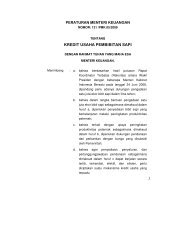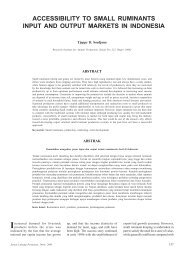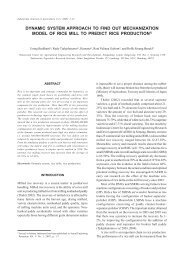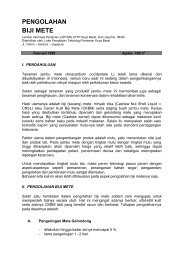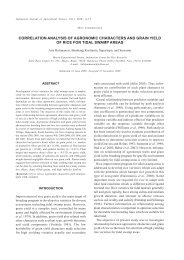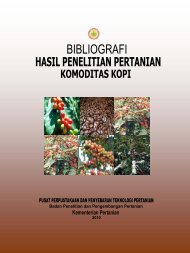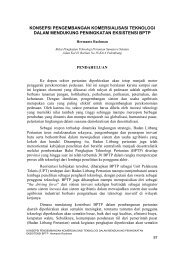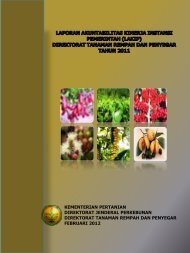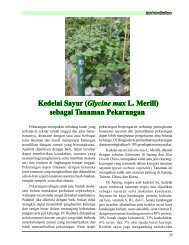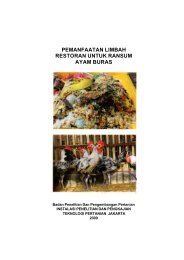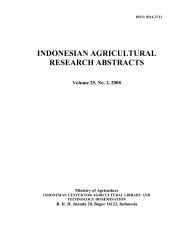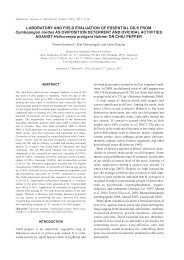major issues and challenges for improving the marketing
major issues and challenges for improving the marketing
major issues and challenges for improving the marketing
You also want an ePaper? Increase the reach of your titles
YUMPU automatically turns print PDFs into web optimized ePapers that Google loves.
competition spreads to various aspects, <strong>and</strong> every enterprise tries to win businesscompetition. Up to 1970's, enterprises generally adopted four <strong>marketing</strong> mix i.efour P'S : price, place, product, <strong>and</strong> promotion to gain advantages. Commencing in1980's an additional P, 'that is power' was introduced, which was actually relatedto monopoly power, or "br<strong>and</strong> name", or "identity <strong>and</strong> image", owned by <strong>the</strong>enterprises.Since 1990's, <strong>the</strong> five P-<strong>for</strong>mula became irrelevant <strong>and</strong> insufficient, as <strong>the</strong>enterprises have to use four-R <strong>for</strong>mula i.e Right Product (R.1), Right Place (R-2),Right Price (R-3) <strong>and</strong> Right Time (R-4) to dominate <strong>the</strong> international market. It isnoted that R-4 is <strong>the</strong> most difficult to implement, because <strong>the</strong> right time here isfrom <strong>the</strong> point of view of consumers <strong>and</strong> is not that of producers. Right Time (R-4) also implies a dynamic element of agribusiness, which includes continuity ofproduction.The element of Right Product (R-1) implies that product characteristicsmust con<strong>for</strong>m to consumer preferences. Well-educated consumers will putemphasize on <strong>the</strong> importance of nutritional value <strong>and</strong> hygiene. The element ofRight Place (R-2) means that we have to identify <strong>the</strong> right market segment towhich our product has greater chance to be accepted. For example, youngprofessional in urban areas is a potential market segment <strong>for</strong> fresh fruit <strong>and</strong>vegetables, which can be penetrated through supermarket chain. The Right Price(R-3) involves pricing strategy, <strong>and</strong> usually price leader is a common strategy topenetrate <strong>the</strong> market.For Asia Pacific products to compete in international market, it has torespond to <strong>the</strong> future <strong>challenges</strong>:a. Superior quality. This is <strong>the</strong> most difficult to fulfill. Many countries nowimpose Sanitary <strong>and</strong> Phytosanitary Measures. Japan enacts 3 measures <strong>for</strong> itsagricultural imports: Japan Agriculture St<strong>and</strong>ard (JAS), Food Safety Law(FSL), <strong>and</strong> Plant Protection Law (PPL). United States imposes HazardAnalysis Critical Control Point (HACCP), Australia applies similar st<strong>and</strong>ard.b. Anticipation of market trends. Consumer preferences change dynamically.A more environment friendly <strong>and</strong> processed products will dominate market in<strong>the</strong> future.c. Superior market distribution. Exporters must develop market distributionabroad by establishing cooperation with <strong>for</strong>eign company. Efficientdistribution system will ensure on time delivery from producers to customers.Farmer groups can build <strong>the</strong>ir own distribution system with <strong>the</strong> support fromgovernment, or do contract with processors. The agribusiness terminal that isintroduced in Indonesia can facilitate farmers in distribution.d. Product Development. The product life cycle tends to be shorter. When <strong>the</strong>product reach saturation point, new product must be developed to meetconsumer satisfaction <strong>and</strong> maintain market share.MAJOR ISSUES AND CHALLENGES FOR IMPROVING THE MARKETING AND DISTRIBUTION OFAGRICULTURAL PRODUCTS Kaman Nainggolan31



